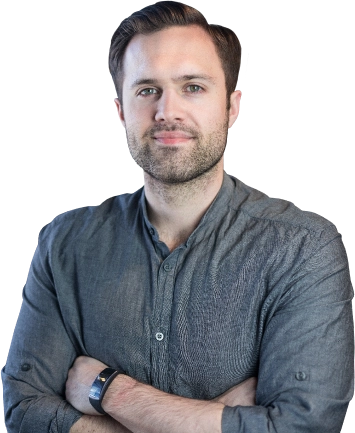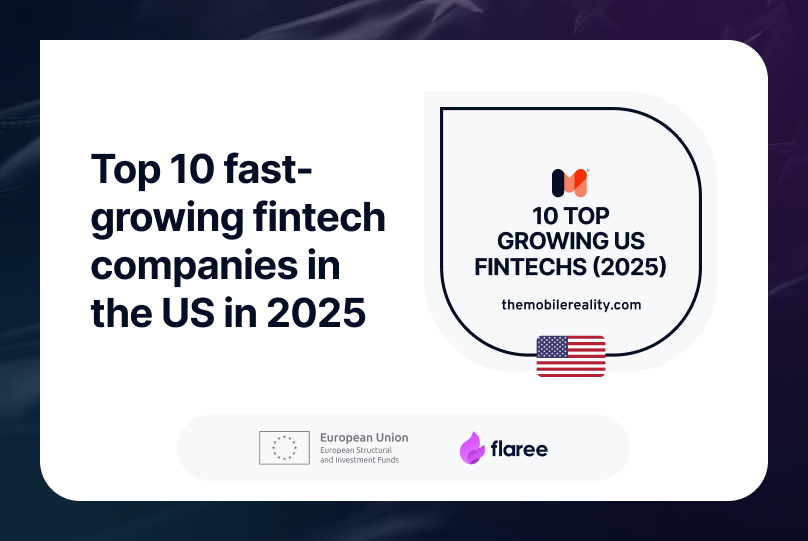Introduction
You have decided to create your own product: you have already chosen to work with our #MRTteam , issued ideas, and are ready to start development. But first, it is important to solve one more question — how the process of working on the project will be organized. The question of what project manager methodology to choose for your next complex project can be an issue for a product owner.
Previously, all software development projects were conducted according to a single Waterfall methodology, it has been known since 1970 when Winston Walker Royce invented and described it. Later, flexible Scrum master and Kanban approaches appeared. We successfully apply all three software management methodologies in practice at Mobile Reality, and this article “Software delivery kanban vs. scrum vs. waterfall - how we manage projects in mobile reality” is about how we conduct projects not in a canonical form, but in an outsourcing environment where the project manager fully manages the processes.
Waterfall
This project management methodology was named for the sequence of actions: the process is like a stream of water moving from one stage to another. Another name is the cascade model. An important difference in the approach is that it is not flexible. Development takes place step by step: until one stage is completed, the next one does not begin for the project manager.
Waterfall methodology is a linear sequential approach to software development that involves a series of distinct phases, where each phase must be completed before the next one can begin. Waterfall teams work on projects using this approach, with team members working in a specific phase of the development process.
A typical waterfall team consists of various members, such as developers, testers, product managers, project managers, and system team members. Each member has a specific role that is defined by their skills, knowledge, and experience. The development team is responsible for building the software according to the requirements defined in the earlier phases, while the testers are responsible for validating the software against the requirements and specifications.
The fundamental premise of a Waterfall project is that each phase must be completed before the next phase can begin. This makes it a very structured and disciplined methodology. However, the rigid structure of Waterfall projects can make it difficult for development teams to adapt to changing requirements, and it can also be challenging to maintain a high level of teamwork and collaboration between team members.
The Waterfall methodology follows a structured and sequential approach to software development, consisting of distinct phases that must be completed in a specific order. The project management structure in Waterfall includes the following stages:
Analytics and Design: In this initial phase, the project requirements are analyzed, and the system design is created. It involves understanding user needs, creating user stories, and designing the overall architecture and functionality of the software.
Development: Once the design phase is completed, the development team starts implementing the software based on the established design specifications. The development process involves writing code, building features, and integrating different components.
Testing: After the development phase, the software is rigorously tested to ensure that it meets the specified requirements and functions as intended. This includes conducting unit tests, integration tests, system tests, and user acceptance tests.
Publication or Release: Once the testing phase is successfully completed and the software meets the quality standards, it is prepared for publication or release. This involves packaging the software, creating documentation, and preparing for deployment to end-users or customers.
Support: After the software is released, ongoing support and maintenance are provided to address any issues, bugs, or updates that may arise. This includes troubleshooting, bug fixing, and implementing enhancements or new features based on user feedback.
Unlike the Agile methodology, which emphasizes iterative development and frequent feedback, the Waterfall approach follows a linear and sequential process. Each phase must be completed before moving on to the next, and changes to earlier stages are challenging to implement once they are closed.
The Waterfall methodology is well-suited for projects with clear deadlines and budgets, where the requirements are well-defined and unlikely to change. It is commonly used for internal corporate products that operate in stable environments, where adaptability to changing business conditions is not a primary concern.
The main drawback of the waterfall model is that it is impossible to make changes to already closed stages. For example, if analytics and design have been done and development has begun, corrections are no longer possible.
It seems that such a sequence cannot have risks, however, they are: by the time of launch, the market situation may change, and the product with the current requirements will become useless to anyone. The WaterFall method is more suitable for the development of internal corporate products, where there is no need to bring an application or other system into a constantly changing business environment.
Scrum
Scrum is a kind of Agile Agile methodology. The methodology is that tasks are divided into time intervals (sprints), which can last from a week to a month. It approaches with best practices along with scrum board and extreme programming. Thus, a large project is decomposed into several small tasks on a scrum board. In a Scrum methodology, the team undertakes to complete all tasks during the sprint.
For many years, were on a Scrum team, it has been our perfect choice for the Time and Material projects. Sometimes it happens that the customer doesn’t know what will be best for the product, so Scrum is a good option when time is of the essence, as we can focus on delivering the finished solution as quickly as possible. Pre-analysis and knowledge of our goals are extremely important, therefore, in cooperation with T&M projects, we cooperate with the client and make a valuation during a dedicated ceremony. In addition to crucial day-to-day issues and planning, our key meeting in Scrum framework is Refinement, where we can rediscuss requirements and check priorities. Prioritization helps in organizing work at a particular stage and allows us and our scrum master, as well as for a product owner to manage tasks more effectively.
In an agile project, the Scrum framework empowers team members to make decisions collaboratively, and to take ownership of their work. This fosters a sense of ownership and accountability that can drive team members to work towards the project's success thanks to agile project management.
In the Scrum methodology, our primary focus is on efficiency, ensuring that the team members work together seamlessly to deliver high-quality software. We adhere to the principles outlined in the Agile Manifesto, emphasizing the importance of individuals and interactions over processes and tools. Team members play a vital role in Scrum, collaborating closely to accelerate the speed of software development while maintaining a strong emphasis on software quality.
The Scrum framework promotes effective communication and coordination among team members, enabling them to work in an agile and iterative manner. Unlike the traditional waterfall methodology, which follows a sequential and rigid approach to project management, Scrum embraces flexibility and adaptability. It empowers team members to make decisions collectively, respond to changes efficiently, and continuously deliver value to the client. In Scrum, the client's vision and cooperation are of utmost importance. We actively engage with the client throughout the project, seeking their input and feedback to ensure that the software aligns with their vision and requirements.
This collaborative approach fosters a strong partnership between the development team and the client, enabling us to deliver a product that meets their expectations. To facilitate the Scrum process, we utilize agile project management tools and software, which provide a centralized platform for managing tasks, tracking progress, and facilitating collaboration among team members. These tools enhance transparency, promote effective communication, and enable the team to efficiently manage the backlog, sprint backlog, and user stories.
Kanban
Kanban is a continuous release of tasks, starting from getting on the board in the status for completion until it is fully ready.
The main tool is a whiteboard, the project manager manages the priorities of every task and constraints in columns on a kanban board.
This type of management we use in terms of Fixed Price projects. Fixed Price needs more straightforward rules for processes. To be the most efficient we find Kanban to be more suitable for this kind of project than Scrum for product owners. During pre-analysis and after the initial estimation of the big scope we set up everything in our management tools and we proceed with a backlog. As work has more scope than in T&M projects, we are limited to plannings, dailies, and retrospectives. Refinement is no longer needed because planning ceremonies makes enough work here. Fixed price gives us a clear vision of what needs to be done, however, changes during development are limited.
Efficiency is a key aspect of Kanban. By visualizing the project development workflow on a Kanban board, we can identify bottlenecks, streamline processes, and eliminate waste. Each task or user story is represented as a card on the Kanban board, and team members can track its progress from one column to the next, ensuring a smooth and efficient flow of work.
Well-conceived solutions are another important aspect of Kanban. Before adding tasks to the Kanban board, careful consideration is given to their feasibility and potential impact on the project. This helps ensure that the solutions being developed are well-planned and aligned with the project's objectives and requirements.
Kanban also emphasizes long-term maintenance. The methodology allows for the prioritization of tasks based on their value and urgency. This ensures that tasks related to ongoing maintenance, bug fixes, and enhancements are consistently addressed, even as new development tasks are added. By dedicating specific columns on the Kanban board for maintenance tasks, the team can effectively manage both project development and long-term maintenance requirements.
The Kanban methodology falls under the broader umbrella of agile practices and software development methodologies. It offers a framework that enables teams to continuously improve their processes, collaborate effectively, and respond to changing requirements. The visual nature of the Kanban board provides transparency and promotes communication within the team, allowing for effective sprint planning and daily Scrum-like meetings to discuss progress, updates, and potential challenges.
Overall, Kanban provides a flexible and adaptive framework for project development. It focuses on efficiency, well-conceived solutions, and long-term maintenance, ensuring that the project remains on track, delivers value, and can be effectively managed throughout its lifecycle.
Conclusion
Based on our experience working on different projects, we have observed the situations where specific methodologies work best:
If you want to develop a corporate tool, the Waterfall methodology is more suitable, especially considering the sprint retrospective. Waterfall provides a structured approach to software delivery, ensuring thorough analysis, design, development, testing, and support phases. This methodology is often preferred when working on corporate tools that require a comprehensive and well-defined plan.
If your goal is to bring a new product to market, Scrum is better suited for product development. Scrum, an agile framework, emphasizes iterative and incremental development, allowing for flexibility and quick adaptation to changing market needs. It enables the development team to deliver a potentially shippable product increment at the end of each sprint, ensuring a faster time-to-market.
For technical support projects that require continuous improvement, Kanban is an excellent option. Kanban's focus on visualizing and managing workflow enables teams to prioritize and continuously enhance the system or application. It allows for the seamless integration of support tasks into the development process, ensuring a steady and efficient flow of work.
At Mobile Reality, we are well-versed in managing projects using different methodologies, including software delivery through Kanban, Scrum, and Waterfall. Our expertise extends to utilizing project management software to facilitate effective collaboration, organization, and tracking of project tasks and progress.
We encourage you to contact us so that we can help you choose the best work model for your specific project. Regardless of the software development methodology chosen, Mobile Reality always prioritizes efficiency to optimize the project's outcomes. We remain proactive and responsive, ensuring that any issues that arise during the project are addressed promptly and that the best decisions are made to ensure your project's success.
Exploring the Business Facets of Software Development
The business strategy behind software development is as crucial as the technology itself. At Mobile Reality, we provide a deep dive into the various business models, methodologies, and strategies that drive profitable and efficient software creation. Our comprehensive articles are designed to guide you through the complexities of the custom software development business:
These resources are crafted for those looking to refine their approach to building and managing software projects. Whether you’re contemplating the most effective development methodology, weighing the pros and cons of outsourcing, or deciding on the right pricing model, our insights can lead to informed decisions. Contact our team for a personalized consultation on software development business strategies. We’re here to help you navigate the path to success in the digital product landscape.





